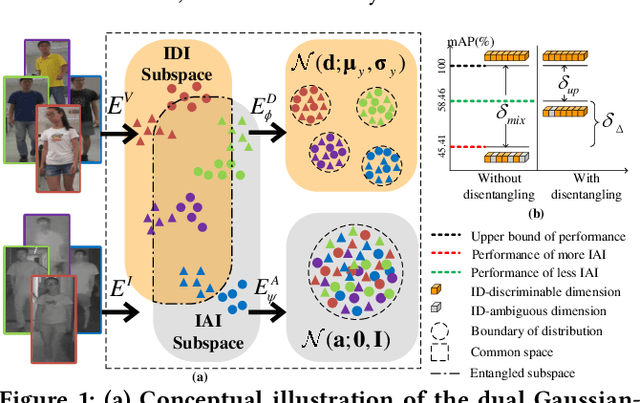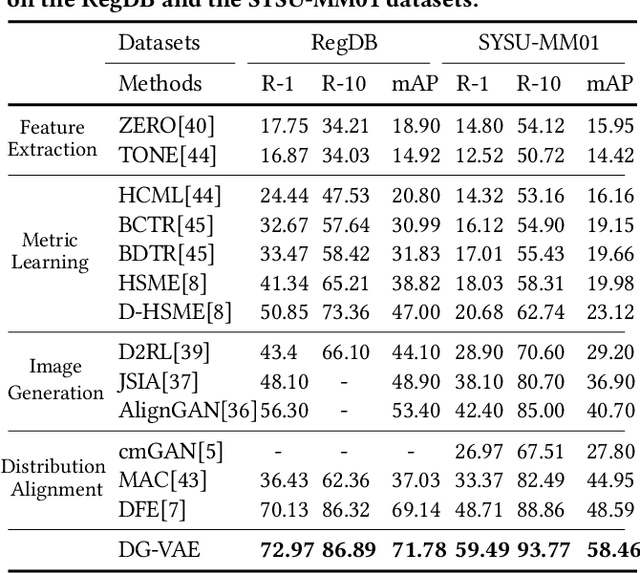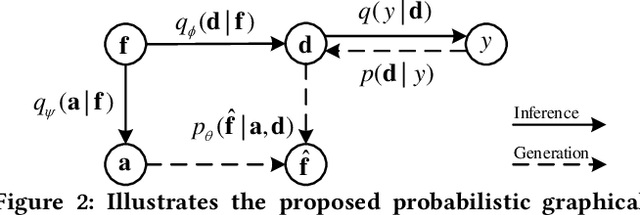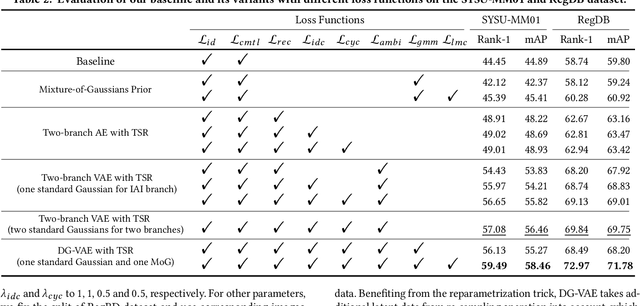Dual Gaussian-based Variational Subspace Disentanglement for Visible-Infrared Person Re-Identification
Paper and Code
Aug 06, 2020



Visible-infrared person re-identification (VI-ReID) is a challenging and essential task in night-time intelligent surveillance systems. Except for the intra-modality variance that RGB-RGB person re-identification mainly overcomes, VI-ReID suffers from additional inter-modality variance caused by the inherent heterogeneous gap. To solve the problem, we present a carefully designed dual Gaussian-based variational auto-encoder (DG-VAE), which disentangles an identity-discriminable and an identity-ambiguous cross-modality feature subspace, following a mixture-of-Gaussians (MoG) prior and a standard Gaussian distribution prior, respectively. Disentangling cross-modality identity-discriminable features leads to more robust retrieval for VI-ReID. To achieve efficient optimization like conventional VAE, we theoretically derive two variational inference terms for the MoG prior under the supervised setting, which not only restricts the identity-discriminable subspace so that the model explicitly handles the cross-modality intra-identity variance, but also enables the MoG distribution to avoid posterior collapse. Furthermore, we propose a triplet swap reconstruction (TSR) strategy to promote the above disentangling process. Extensive experiments demonstrate that our method outperforms state-of-the-art methods on two VI-ReID datasets.
 Add to Chrome
Add to Chrome Add to Firefox
Add to Firefox Add to Edge
Add to Edge